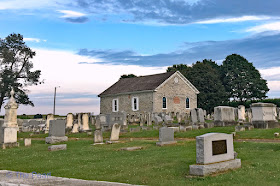“Remember that happiness is a way of travel – not a destination.” —Roy M. Goodman
We've been in New York for three months, so we decided it was time to fly home and visit family and friends. This year we decided to fly out of Baltimore...I know, it's a long way from Ithaca, but there were a few good reasons for using this airport. First we wanted to visit Kyle and his family before we left...Baltimore is as easy to get to as Philadelphia, Pittsburgh or Newark for a direct flight on Southwest (we had free flights). Another reason for flying out of Baltimore...we aren't fond of flying out of Rochester or Syracuse...been there done that. Neither have direct flights into Austin on any airline. We've spent days waiting on connecting flights from those airports.
We had a great time in Texas. We visited with lots of family and friends and even had a chance to take Texas Pearl out. Great sunsets are a given in Texas.
We had a great time in Texas. We visited with lots of family and friends and even had a chance to take Texas Pearl out. Great sunsets are a given in Texas.
The added bonus for flying out of Baltimore...it gave us a chance to visit the Amish country around Lancaster, PA on the way home to New York. We spent two nights in Intercourse, PA. What a name for an Amish community. The countryside is beautiful in this part of Pennsylvania.
The Amish working in their fieldsThe Village of Intercourse, Pennsylvania is considered to be the heart of the Amish Country in Lancaster County. It offers a glimpse into the traditions of the Pennsylvania Dutch with its cultural experiences, shops, homemade goods and family-friendly events. So just where is Intercourse, PA? It’s located in eastern Lancaster County, just 10 miles east of downtown Lancaster and 50 miles west of Philadelphia. One of the biggest attractions of Intercourse is the Amish people themselves. Another big draw...a lot of nice little shops.
The friendly town of Intercourse, tucked into the Amish countryside was historically known as a destination where locals, Amish farmers and craftsmen conducted business and socialized. Founded in 1754, the town was originally named after an old tavern, the Cross Keys and didn't become known as Intercourse until 1814. Much speculation went into the origin of the town's name, but none of the claims have been validated. It's possible the town was named after an old race track on Old Philadelphia Pike called Entercourse, which later evolved into Intercourse. Another theory pertains to the term "intercourse" which in those days was commonly used to describe fellowship, social interaction and support - the same values the town still holds today.
We took a buggy ride...we enjoyed visiting with our driver, John, and found out a little more about the area.
Dinner at the Revere Tavern was so good the first night...we went back the following evening. The historic tavern was built in 1740. I had the mushroom ravioli both nights, Stan had rainbow trout the first night and salmon the next night.
A few sights from the back roads near Intercourse.
We enjoyed sitting on the porch of our Inn watching the traffic go by in the evening.
We took a buggy ride...we enjoyed visiting with our driver, John, and found out a little more about the area.
Dinner at the Revere Tavern was so good the first night...we went back the following evening. The historic tavern was built in 1740. I had the mushroom ravioli both nights, Stan had rainbow trout the first night and salmon the next night.
A few sights from the back roads near Intercourse.
We enjoyed sitting on the porch of our Inn watching the traffic go by in the evening.






























































